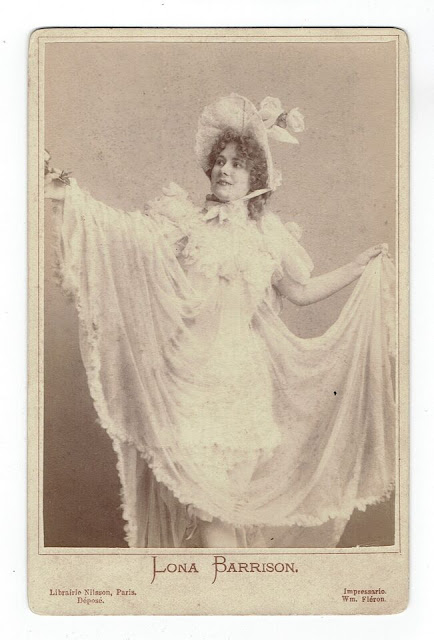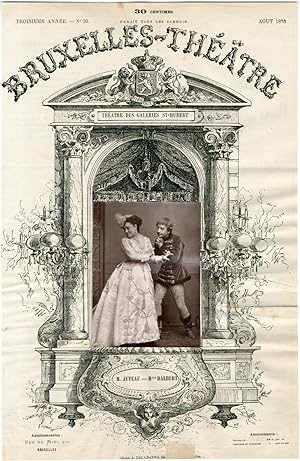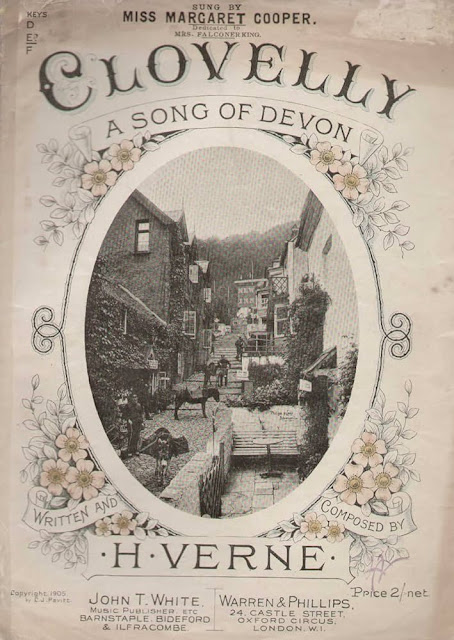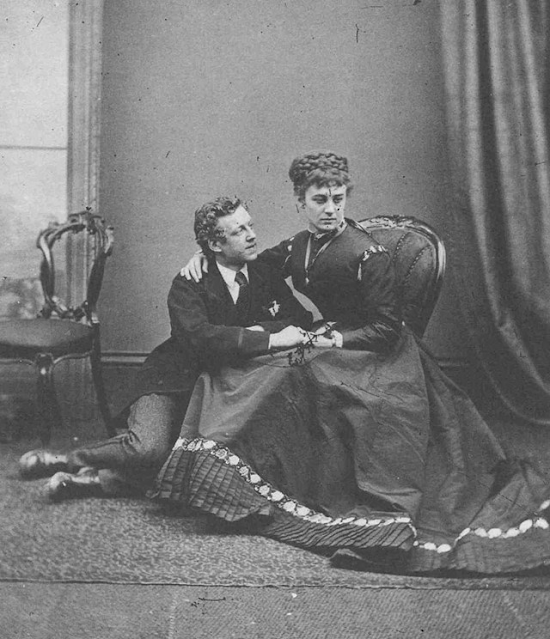Charles Lamy was a long-lived feature of the French musical theatre, as juvenile lead, as little comic and, latterly in a whole panoply of singing character roles. I wrote about him in my Encyclopaedia of the Musical Theatre, with mention of his brother and his son ... as follows ...
LAMY, Charles [CASTARÈDE, Charles Désiré] (b Lyon, 28 August 1857; d Orléans 15 June 1940).
The son of Adrien [Étienne Constant] Castarède, the director of Lyon's celebrated Théâtre des Célestins, and the foremost of a family of light-tenor vocalists of charm (his brother Maurice and his son Adrien followed the same path), Charles Lamy had a 40-year career in the musical theatre, at first as a sweet-voiced tenor juvenile, and later as a full-blooded comedy player of some finesse. After beginning his career in the theatre as an orchestral violinist at the Théâtre de Saint-Étienne, he made his first stage appearances at the same house, but he began his lyric career in earnest, after some studies at his local conservatoire, playing opérette in Marseille (1876-7), touring in Italy (1877-8) and playing at the Galeries Saint-Hubert in Brussels (1879) before he was engaged at the Paris Théâtre des Bouffes-Parisiens in 1880.
His first rôle at the Bouffes was probably his most memorable of all for, in December 1880, he created the high tenorino-cum-comedy part of the Prince Fritellini in Audran's La Mascotte (`Le Je ne sais quoi poétique'), but there were plenty of other fine parts to follow. Prince Olivier in Audran's next work, Gillette de Narbonne (1882), and the goofy Egyptian Putiphar Bey in Victor Roger's comical Josephine vendue par ses soeurs (1886) were amongst his other most important creations in the first part of a career which also included rôles in such further new works as Coquelicot (1882, Perez), Lacome's successful Madame Boniface (1883, Fridolin), La Dormeuse éveillée (1883, Saturnin), Serpette's La Gamine de Paris (1887, Hercule), Lecocq's Les Grenadiers de Mont-Cornette (1887, Canut), Pugno’s Sosie (1887, Neradi/Ravaja), the vaudeville Le Microbe (1887, Petrewski), Audran's Miette (1888) and La Gardeuse d’oies (1888), Pugno's Le Valet de Coeur (1888), the military spectacle Mam’selle Piou-Piou (1889, Camille), Roger's Le Fétiche(1890, Valentin des Hauts-Crénaux), Varney's La Fille de Fanchon la vielleuse(1891, Jules), La Famille Vénus (1891) and Paul Vidal's Eros (1892, Fortuny). He also performed the tenor rôles -- Gontran in Les Mousquetaires au couvent etc -- in the theatre’s repertoire of revivable shows.
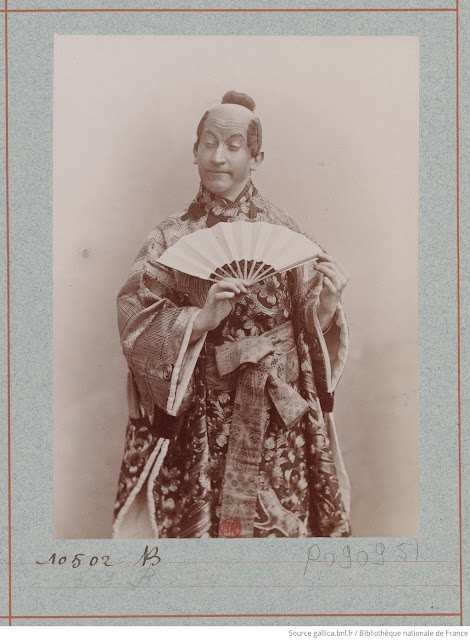
The vocal demands grew progressively less, and the comic ones more prominent, as he moved on through such pieces as Pessard's Mam'zelle Carabin(1893, Monsieur Chose), Messager's Madame Chrysanthème (1893, Kangourou), Varney's Les Forains (1894, lion-tamer Jules César), Banès's Le Bonhomme de neige (1894, Fricotin), Diet's Fleur de vertu (1894, Casimir), L'Élève de Conservatoire (1894, Gedéon), Audran's successful L'Enlèvement de la Toledad (1894, Gaston Lombard) La Saint-Valentin (1895, Bertiquet), La Belle Épicière (1895, Pomponneau), the winning vaudeville La Dot de Brigitte(1895, Mulot), and the part of the secret agent in Monsieur Lohengrin (1896, Boussard) to what was undoubtedly the best new rôle of this later period of his career as the joyously silly-âne Duc Jehan de Beaugency of Les Fêtards (1897).
In 1897 Lamy became a member of the company at the Palais-Royal, where Les Fêtards was included amongst the occasional musical productions in a programme of mainly comedies, but he still made intermittent forays on to other musical stages, creating memorably the part of a low-comical Paris in Claude Terrasse's Paris, ou le bon juge (1906, revived 1922), and latterly onto the cinema stage. He played in Terrasse's Le Coq d'Inde (1908), appeared in revue and, in 1920, took the rôle of Ischabod in the production of Rip! which opened the new Théâtre Mogador and in which his son, Adrien, played the small part of Pickly. He died alongside that same son, and their wives, in the German bombardement of Orléans in 1940 at the age of 83.

Adrien LAMY [Adrien Maurice Édouard CASTARÈDE] (b Paris, 17 May 1896; d Orléans, 2 July 1940), a clean-necked, boyish, light vocalist, dancer and actor, had a lively career in the Paris musical theatre of the 1920s, playing juvenile lead in the French version of The Pink Lady, replacing Urban in the title-rôle of Dédé, and appearing in prominent juvenile parts in a full list of other popular jazz-age musicals including the Théâtre Marigny's Je t'veux(1923, Vignac, `C'est fou la place que ça tient', `Si c'était pour en arriver là' and the shimmy orientale `Là-bas'), Szulc's Le Petit Choc (1923, Alfred de Marigny, `L'Ouverture de la pêche', `Il faut savoir prendre les femmes'), and Moretti's En chemyse (1924) and Trois jeunes filles ... nues! (1925). In 1926 he was the first French Tom in No, No, Nanette, introducing Paris to `Thé pour deux' and `J'ai confessé à la brise' in partnership with Loulou Hégoburu, with whom he teamed again in Paris's Tip-Toes (Steve Burton), performing `La Femme que j'aimais' (a reverse-sex `The Man I Love') and `Un sentiment' (`That Certain Feeling'). He played the put-upon young hero Étienne Fanoche in Zou! (1930), appeared in Moretti's Rosy (1930) and was Orphée to the Eurydice of Marise Beaujon in the Mogador's starry 1931 revival of Orphée aux enfers. In the subsequent 1930s he appeared in the Parisian-Hungarian Katinka (1933 `En écoutant les petits oiseaux' w Lyne Clevers), as Frontignac in the Josephine Baker La Créole (1934) and in such productions as Les Soeurs Hortensia (1934, film version 1936), Un p'tit bout de femme (1936) and Les Jolies Viennoises (1938).
Maurice LAMY [Maurice Henri Antoine CASTARDÈDE] (b Lyon, 1863; d April 1930) created two major musical comedy rôles -- the bedazzled shop-boy Aristide in Messager's Les P'tites Michu and the comical Loustot of the same composer's Véronique -- in a career which ran closely alongside that of his brother, Charles. He also appeared in the premières of such pieces as Les Pommes d'or (1883), the French version of Donna Juanita (1891), Le Cocarde Tricolore (1892, M Bosthonn), Cliquette (1893, Nicolas), Serpette's Cousin-Cousine (1893) and Shakespeare! (1899, Jack), Sa Majesté l'amour (1897, Tricala), La Petite Tache(1898, La Bûche), La Dame de trèfle (1898, Roger), La Fille de Paillasse (1894, Joséphin), La Demoiselle aux caméllias (1899, Octave), Lecocq's La Belle au bois dormant (1900, Le Taupier), and La Fille de la mère Michel(1903, Quatrebard). He also played des Toupettes in the 1897 revival of Les Douze Femmes des Japhet. He later appeared in supporting rôles in several of Louis Ganne's works including Hans, le joueur de flûte (Petronius) and Rhodope at Monte-Carlo, where he was, from 1913 director of the Casino, in Cocorico (Margrave Jean-François) and in Banès's Léda (1909, Ménélas) and, in his sixties, took a four-line rôle as Le Directeur du Casino in Hahn's Le Temps d'aimer (1926).
Quite a family. But I only went forward. And the story of the Castarède dit Lamy family does go back a generation. To father Adrien (1823-1877) and mother Marie Caroline Victoire Moreau-Valbon née Fleury dite 'Caroloine Duval' (188-1872). And what was my surprise to come upon these photos today:
It is they. Dated 20 October 1869. And to be found at the ebay shop of the splendid photowide. I thought they deserved to be preserved in context and so .. voilà!


